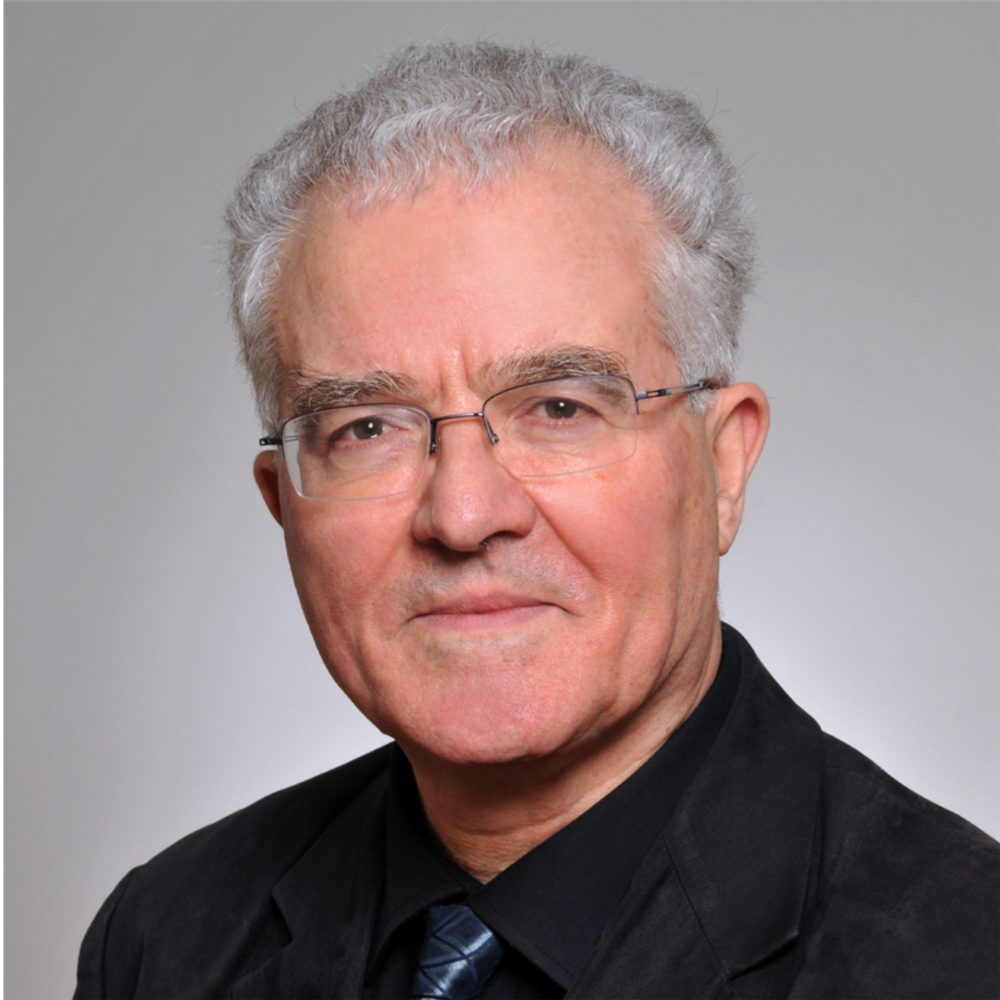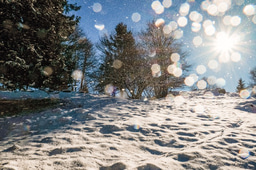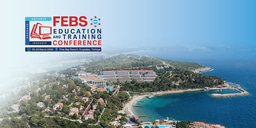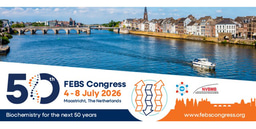Eric Westhof: "... your job becomes your hobby or vice versa when you are a scientist."


Eric Westhof is Professor Emeritus of Structural Biochemistry, at the University of Strasbourg, Institute of Molecular and Cell Biology (IBMC) of the French National Centre for Scientific Research (CNRS). Born in Brussels, he studied in Liège, Belgium and Regensburg, Germany, finishing in 1974 with a PhD in biophysics. From 1977 to 1981 he trained as a Fulbright-Hayes postdoctoral fellow with Muttaiya Sundaralingam in Madison, Wisconsin, USA. He returned to Europe with an EMBO Fellowship for a second postdoc with Jean-Pierre Ebel and Dino Moras at the IBMC in Strasbourg. In 1983, he became professor at the University Louis Pasteur, now the University of Strasbourg. He was Vice-president for Research and Doctoral Studies at the University of Strasbourg from 2007 to 2012, Director of the IBMC from 2006 to 2016, and Delegate for Education and Formation at the French Académie des sciences between 2016 and 2022. His editing activities focus on nucleic acids: he has co-edited four books and and is an Editor of RNA, Nucleic Acids Research, Journal of Molecular Recognition, and Biochemical and Biophysical Research Communications. He was president of the French Society of Biochemistry and Molecular Biology (SFBBM) and of the International RNA Society. He is a member of EMBO, Deutsche Akademie der Naturforscher LEOPOLDINA, Academia Europaea and the French Académie des sciences. He is the recipient of the Prix Jacques Monod, the Outstanding Service Award and the Lifetime Achievement Award of the RNA Society, the Chevalier de l’Ordre National du Mérite, The Medal from the SFBBM, the Medal Feodor Lynen from the Gesellschaft für Biochemie und Molekulare Biologie, the Wang Ying Lai Prize, Institute of Biochemistry from the Academia sinica (Shanghai), and the Rolf-SAMMET-Prize from the Johann Wolfgang Goethe Universität (Frankfurt-am-Main).
What drew you to your research field?
Both molecular biology and structural biology were in their early stages of development when I started my university studies. I studied physics with the aim of soon moving into biophysics. My parents were living in London at the time, and I could enjoy the dynamic scientific environment that the city could offer – not only Dr Who on TV, but also the Science Museum, cheap and second-hand paperbacks, and the New Scientist magazine. Two books convinced me to pursue biophysics: first, The Double Helix by Jim Watson (published in 1968) and then Le hasard et la nécessité by Jacques Monod (1970). My favourite books in physics were Introduction to solid state physics by Charles Kittel and Atomic spectra and atomic structure by Gerhard Herzberg. They started my fascination for molecules and the diversity of molecular forces and interactions. Biological macromolecules exploit in amazing and subtle fashions all those physicochemical and quantum physics interactions. At the end of my PhD, I discovered the beginnings of the unfolding of the beauties of RNA molecules, especially thanks to the very clear and so well-illustrated articles by Muttaiya Sundaralingam. And I continue to be amazed and fascinated by what those four bases A, G, C, U and the ribose-phosphate have achieved since the origins of living cells.
How do you explain your work to a non-scientist?
This is always challenging. It requires a lot of imagination and analogies because the language and words of science are unknown to too many. I generally try to describe the tools used, the facts that are deduced, and the scientific method itself, which is not always understood. Certainly, an effort is necessary to assimilate the scientific observation and its explanation. But, in the arts as well, to go beyond the simple personal appreciation of a work to its real meaning in human culture requires an apprenticeship or listening to an artist interpreting another world. The problem has been well described by C.P. Snow in his book The two cultures and the scientific revolution (1961). As C.P. Snow has shown, this cultural divide can be observed in many countries, albeit with varying degrees of amplitude. He has suggested that this phenomenon of polarization is amplified by two factors: an education that is too quickly specialized and the inertia of the social environment that tends to rigidify postures. Every day we see more and more how much our society suffers from a lack of scientific culture. In the last few years, the lack of knowledge about the molecules of life and notions of evolutionary biology have been the source of many misunderstandings about barrier gestures, vaccines, or health precautions. Nowadays, the public understanding of the scientific method is becoming an even keener problem than in the times of C.P. Snow. As scientists, we should all be concerned by this sad (and dangerous) situation. A recent report (Call to Action for Science Education: Building Opportunity for the Future, https://doi.org/10.17226/26152) published by the National Academies of Science, Technology and Medicine in the USA expresses very similar concerns. The report's header is strong: "Science education is not the national priority it needs to be."
What aspects of your life as a researcher do you most enjoy?
Sure, there is a life outside the lab, but your job becomes your hobby or vice versa when you are a scientist. Further, we get to know and appreciate people all around the world who think and behave similarly. I really enjoy travelling to scientific conferences for meeting other scientists and listening to scientific stories all day long. At the same time, we learn to appreciate different cultures, food and beautiful surroundings. Video conferences cannot replace the human warmth of such in-person gatherings.
What comes first: technique or biological question?
Sydney Brenner remarked that “Progress in science depends on new techniques, new discoveries and new ideas, probably in that order”. New tools and new technical developments are critical for progress in science since Antoni van Leeuwenhoek used to polish lenses for building light microscopes. I would never have been able to model and assemble large catalytic RNA molecules without the Evans and Sutherland PS 300, a powerful and programmable computer graphics device in the 1980s. Modern biology exploits a whole gamut of new technologies that originated in physics laboratories, such as microfluidics, optical devices, or cryo-electron microscopies. This is sometimes underappreciated by evaluation committees and not only because such developments take a lot of time, interdisciplinary expertise, and dedication. The choice of the research topics is clearly central, but that choice must also take into account the technological tools available for obtaining and treating the data. The early recognition that a newly developed technique opens original ways to retrieve data on a biological question, even an old one, is a mark of good science. In the end it is not a question of which comes first: both the biological question and the technique are intimately intertwined in the scientific method.
What worries you about life sciences research currently?
This question is linked to the previous one of “How do you explain your work to a non-scientist?” Although our societies rely enormously on scientific achievements and products, the understanding of science and the scientific method is not progressing. This lack of scientific understanding leads to an avalanche of fake news or antiquated beliefs (such as that the earth is flat, or the earth is at the centre of the universe). Further, there is now the tendency to view science as just another viewpoint about the world around us, as valid as an old religious myth or the elaborate construction of a single individual. As the French philosopher Ernest Renan said (in 1887), we should not behave like “those morose sages who retire to their tents when the crowd does not agree with them”. Concerning the biological sciences, the dangers are multiple and can be life threatening, starting from basic anti-Darwinian or anti-vaccines postures. As biologists, we should each of us relentlessly continue to promote the understanding of modern biology anchored in Darwinian evolution.
The recent pandemic led to an increased worry in life sciences research. I mean research on gain-of-function in viruses in the absence of dedicated vaccines or effective drugs. It is documented that, for various reasons, deadly viruses did escape from various high-safety laboratories around the world in the last 70 years. Should we really pursue that kind of research? The origin of the deadly coronavirus that spread havoc throughout the world is still unclear and disputed. If it were established that it did come out of a high-safety laboratory, whatever the country in which it did occur, how would our societies react? Would biology raise as much dislike and anguish as nuclear power? Are we prepared for this outcome? Dangers do not come only from the manipulations of living systems or viruses. The applications of Artificial Intelligence in biology could also lead to surprising damaging results. A recent article in Nature Machine Intelligence (https://doi.org/10.1038/s42256-022-00465-9) reports that AI-based drug design tools could be tuned to produce extremely toxic compounds, some of which were unknown!
A related point of attention is the frequent use of promotional language (or “hype”) in writing papers and grant applications (https://doi.org/10.1001/jamanetworkopen.2022.28676). The indiscriminate use of positive language not only undermines the quality of science writing but can also generate excessive hopes, potentially harmful especially in biomedical sciences. Unfulfilled expectations lead also to disappointment and scepticism among both scientists and non-scientists. The scientific method requires multiple controls and time. Two recent breakthroughs in biological sciences – the CRISPR targeting genome editing method and the RNA-based vaccines – took more than 25 years from the first fundamental research descriptions to the applications we now know and appreciate.
Introduction to Eric Westhof’s work
Research summary
A specialist in structural biochemistry, Eric Westhof has carried out work on the dynamics and catalytic functions of nucleic acids and more particularly RNA, using crystallographic and bioinformatics approaches. He has expanded the physicochemical, structural and dynamic studies of RNAs to their functional and evolutionary aspects, as well as to the prediction of strong and specific molecular interactions with molecules of therapeutic interest. With his colleagues, PhD students and postdocs, he developed architectural models of several catalytic RNAs. This work has made it possible to identify many rules of RNA folding and self-assembly. Thanks to the development of an original nomenclature of pairings between nucleic acid bases he established, the characteristics of the recurrent structural modules of the RNA were extracted, thus allowing their detection in sequences. He is now focusing on ribosomal translation and fidelity and the roles of RNA modifications, especially in tRNAs, using mass spectrometry techniques. Recently, he has described an integrated view of the genetic code, based on pairing energy between codon and anticodon triplets. In this description, the alternative information-rich representation of the 64 codons is circular with an asymmetric codon distribution that leads to a clear segregation between GC-rich 4-codon boxes and AU-rich 2:2 and 3:1 codon boxes. The evolution and expansion of the genetic code is initially based on GC-rich pairs with the progressive introduction of A/U pairs stabilized by tRNA modifications thanks to the presence of modifying enzymes. The extant structure-based network of interactions and modifications results in a dynamical uniform decoding of all tRNAs that can adapt to cellular constraints. During the last 12 years, he has organized the RNA_Puzzles challenge, a CASP-like competition for the RNA modelling groups.
Lab webpage: eric-westhof.ibmc.cnrs.fr/
Two key papers
Michel, F. and Westhof, E. (1990) Modelling of the three-dimensional architecture of group I catalytic introns based on comparative sequence analysis. J. Mol. Biol. 216, 585–610. https://doi.org/10.1016/0022-2836(90)90386-Z
Leontis, N.B. and Westhof, E. (2001) Geometric nomenclature and classification of RNA base pairs. RNA 7, 499–512. https://doi.org/10.1017/s1355838201002515
More information on the FEBS Datta medal and plenary lecture at the FEBS Congress
The Datta medal is awarded annually by FEBS for outstanding achievements in Biochemistry and Molecular Biology or related sciences: www.febs.org/other-activities/prizes/febs-medals/
Eric Westhof will be presented with the medal at the 47th FEBS Congress in Tours, France on Saturday 8th July 2023 where he will deliver a lecture on ‘RNA modifications and the genetic code’: 2023.febscongress.org/
Top image of post: by Eric Westhof, showing parts of the three-dimensional structure of the Tetrahymena thermophila ribozyme as modelled in 1996 (DOI: 10.1016/s1074-5521(96)90166-0) with in magenta the guide helix formed by the 5'-exon and the ribozyme RNA. At the right, one face of the cube illustrates a functional ribosome with the tRNAs at the E-, P-, and A-sites highlighted and, on the next face, an integrated representation of the genetic code based on pairing energy between codon and anticodon triplets. With thanks to A. Gaudry (IBMC-CNRS) for the image of the cube.





Join the FEBS Network today
Joining the FEBS Network’s molecular life sciences community enables you to access special content on the site, present your profile, 'follow' contributors, 'comment' on and 'like' content, post your own content, and set up a tailored email digest for updates.